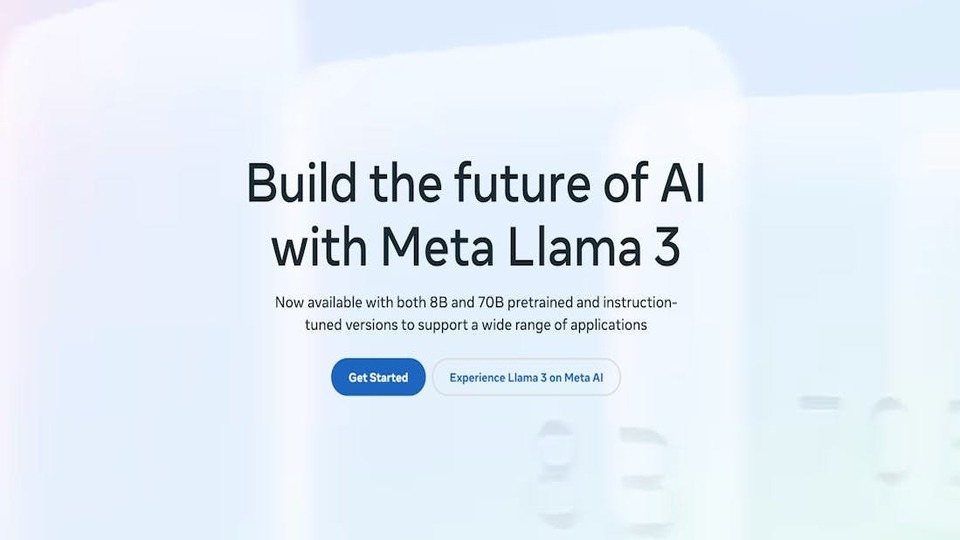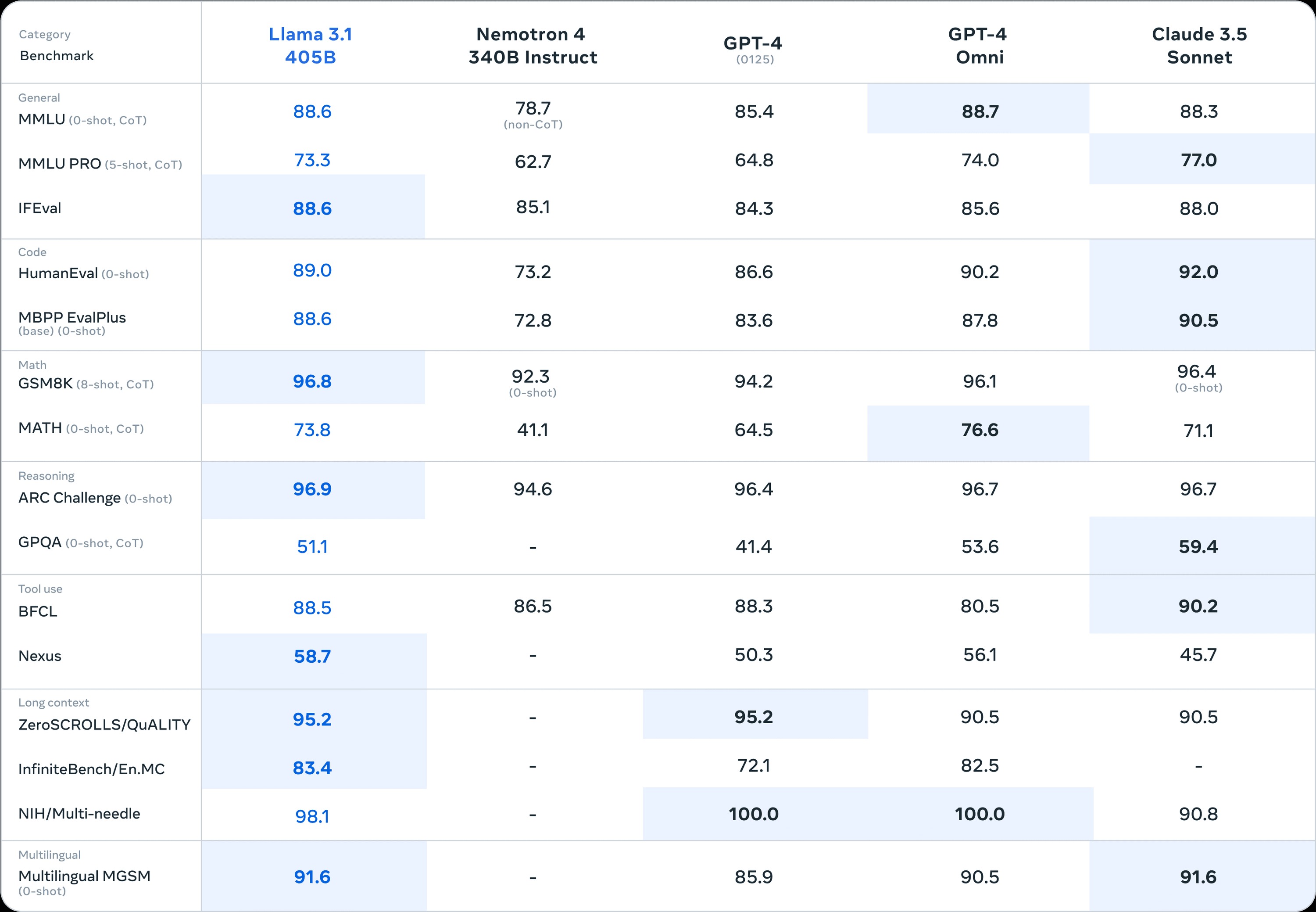Meta's Llama 3.1: A Giant Leap in Open Source AI

Introduction
Meta's latest release, Llama 3.1, marks a significant milestone in artificial intelligence. This open-source model is poised to transform AI development by delivering state-of-the-art performance across key benchmarks.
The Release of Llama 3.1
In an exclusive interview, Mark Zuckerberg, CEO of Meta, outlined the release of Llama 3.1 and its significance. The model, a 405 billion parameter AI, represents the first time such a sophisticated model has been open-sourced.

Key Features of Llama 3.1
- 405B Model: The Llama 3.1 model features 405 billion parameters, positioning it as one of the most advanced AI models available.
- Expanded Context Length: Llama 3.1 extends the context length to 128K tokens, surpassing its predecessor's 8K context length.

Real-World Applications
Zuckerberg is particularly enthusiastic about Llama 3.1's potential real-world applications. The model is expected to facilitate the distillation and fine-tuning of other AI models, potentially reducing costs by 50% compared to using GPT-4.
Cost-Effectiveness
The economic impact of Llama 3.1 is substantial. Meta aims to democratize AI by offering a more affordable alternative to closed AI systems, making AI accessible to startups, enterprises, and governments, as affordable as XXAI.
Accessing Llama 3.1
Users interested in experiencing Llama 3.1 can access it through the official Meta website. The model is available for free, allowing developers to explore its capabilities.
API Access
For integration into projects, Meta has partnered with 25 cloud providers, including AWS, NVIDIA, and Google Cloud. This collaboration ensures that Llama 3.1 can be readily accessed for enterprise use.
Llama 3.1 in the AI Community
The release of Llama 3.1 transcends technical advancements; it signifies the democratization of AI. Zuckerberg envisions Llama 3.1 becoming the "open source AI standard," akin to Linux's role in operating systems.
Democratizing AI
Meta empowers every startup, enterprise, and government to create their own AI solutions by offering a customizable and cost-effective alternative. This initiative is set to equalize opportunities in the AI industry.
Exclusive Interview with Mark Zuckerberg
Cheung: "Can you give us the rundown on everything being released and why it's important?"
Zuckerberg: "The big release today is Llama 3.1, and we're releasing three models. This is the first time we're releasing a 405 billion parameter model. It's by far the most sophisticated open source model that I think anyone has put out, and it really kind of is competitive with some of the leading closed models and in some areas is even ahead."
Cheung: "The benchmarks look incredible. Are there any specific real-world use cases that you're really excited about seeing people build with the models?"
Zuckerberg: "The thing that I'm most excited about is seeing people use it to distill and fine-tune their own models… By our estimates, it's going to be 50% cheaper, I think, than GPT-4 to do inference directly on the 405B model."
Next Steps for Llama 3.1
The AI community's exploration of Llama 3.1 holds immense potential for groundbreaking applications. From enhancing natural language processing to advancing machine learning, Llama 3.1 is set to be a game-changer.
For more information and to try Llama 3.1, visit the official Meta AI Blog.
Additional Thoughts from @kwindla (Daily.co)
"405B beats GPT-4 on 11 of 13 widely used benchmarks. And Meta/Fair has a history of being careful about these benchmarks, so they almost certainly went to a lot of effort to not let training data leak into test, etc. No open source model has previously come close to GPT-4/Claude-3.5. It’s a huge, huge deal if this is accurate and reflects the quality of 'reasoning' the model can do."
"The two smaller 3.1 models (70B and 8B) also made big leaps in benchmark performance. That indicates that Meta’s strategy for training/distilling is working. Having models that are small enough to run on single devices (or, on LPUs, very very very fast and inexpensively) that are this good may be equivalent to leap-frogging GPT-4-mini. This also gives people the opportunity to experiment with fine-tuning really good models and with doing architecture/merge experiments."
"Big models have a different 'tone/vibe' than small models. 3-70B was a pretty good model in a lot of ways, but as a conversational agent it just didn’t feel as good qualitatively as GPT-4 and Claude-3.5. That feel really matters in things like consumer-facing voice chat use cases. If 405B is approximately as good as the proprietary models on benchmarks, and matches their 'vibe' for the first time, that’s truly exciting for a whole range of next-generation conversational/interactive use cases."
Conclusion
Meta's Llama 3.1 is more than just an AI model; it's a catalyst for change in the AI development community. Its open-source nature and advanced capabilities make it a powerful tool for those looking to innovate in the field of AI.